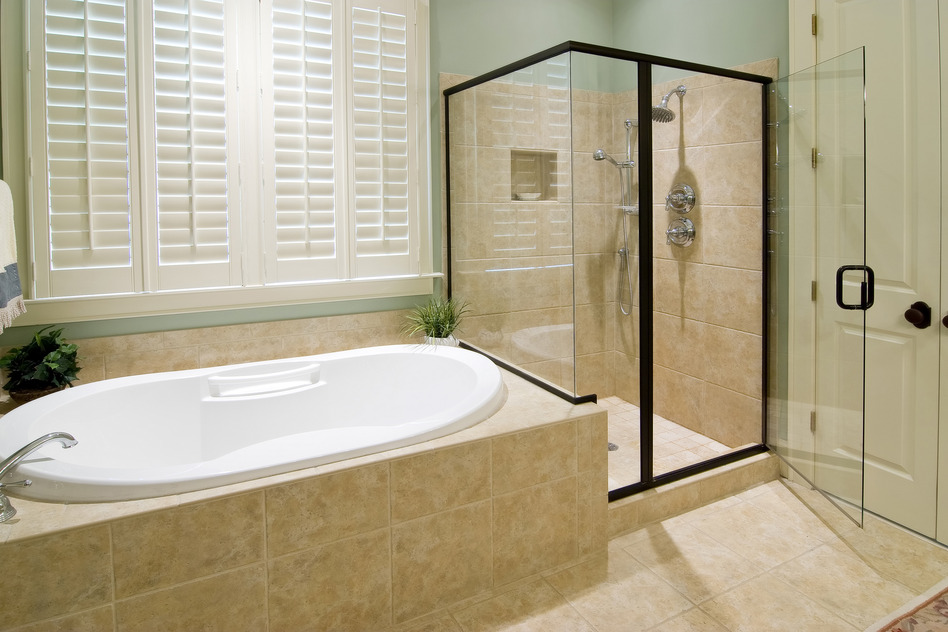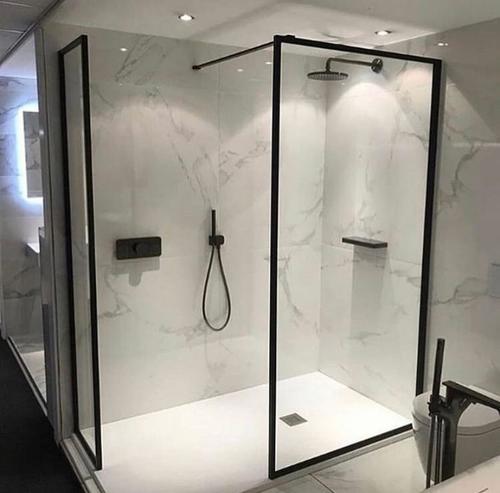Efficient Ways to Install a New Shower Unit
Efficient Ways to Install a New Shower Unit
Blog Article
Just about every person is bound to have their private opinion involving How to Install a Shower Enclosure .

An effective shower installment requires mindful preparation and also a lot of work. Most of the times, you will certainly need to do three types of jobs: mounting wall surfaces, mounting the plumbing, and finishing walls.
Different Sorts Of Shower Units
Most Typical Blunders
Prep work.
First of all, you have to decide on the kind of shower that you want to set up. It is essential to establish whether the picked shower is capable of managing particular systems as well as can manage a secure degree of water with the boiler. Many shower devices nowadays are designed to be versatile to various water stress (such as stored hot water and cold mains).
It is also essential to take into consideration the water stress and also the preparation of the piping as well as drain for the shower.
Technique.
Depending upon the type of shower you wish to install, the shower head should either be fitted in order to avoid its contact with the water in the bathroom below or the base tray, or it needs to have a check valve.
Before starting, it is recommended to mark the settings of the shower head as well as control, as well as to intend the pipe-work entailed. In addition, the water drainage system to get rid of the waste water will need to be planned. Both positions of the wire course as well as the shower button will additionally require to be considered if an immediate or electric shower system is being mounted.
Use the direction overview given with the shower system to fit the shower control.Before fitting the pipelines that will provide the water to the shower system, it is very important to remove the water. In order to shield the pipes, they must be offered a water resistant covering as well as also fitted with isolating shutoffs. The pipelines can after that be hidden into the wall surface and also glued over to neaten the overall appearance.
Fit the base tray, shower head, and also fittings.
Link the primary shower control to the pipelines that will certainly be providing the water (This may call for a female screw string adapter).
Reconnect the water as well as examination the pipes for any leaks, as some might need firm.
If you are setting up an electrical shower, bear in mind to switch off the electrical energy supply prior to making any type of electric connections. When these links have actually been made (there need to be guidance within the instruction manual), the power supply can be switched back on.
Adjusting Water Stress to Suit Your Shower.
The cold water tank can be lifted to a greater elevation (sometimes as low as 150mm (6inches)) by fitting a strong wood support underneath it - potentially composed of struts and blockboards. If you pick this alternative, the primary and also circulation pipelines will additionally need to be increased to fulfill the new height of the reservoir.
Conversely, a booster pump (a solitary pump or a dual/twin pump) can be fitted. Whichever type is picked, it has to be linked into the power supply in order to run.
Piping and Drain.
It is best to make use of 15mm diameter supply pipelines, and also make the go to the shower as brief and also straight as feasible so as to maintain optimal stress and reduce heat loss. Additionally, by minimising the use of elbow joints for pipeline corners, you can decrease the resistance in the flow of the water. You can accomplish this by bending the pipes rather.
How Do You Install a Shower? Follow This Guide
Installing a Shower at a Glance
Tools & Materials: Level, electric drill, caulk, hole saw, cedar shims, shower unit Step 1: Drill pilot holes Step 2: Prep fixture holes Step 3: Move unit into place Step 4: Caulk corners and base Step 5: Attach door Step 6: Install shower pan Whenever plumbing is involved in a DIY project, people worry about what might go wrong. The truth is that installing a shower isn’t that complicated, and you can save a lot of money by doing it yourself. You shouldn’t need to make any alterations to your plumbing to complete the job, and most of the tools you need will be provided in your new shower kit.
Can I Install a Shower Myself?
Even if you’ve never installed a shower before, you’ll find this to be a project that is perfectly suited for DIYers with a moderate level of experience. Whether you're doing a bathtub conversion or installing a new stall, most of what you need comes in shower kits that you can purchase from a hardware store. The first thing you need to do is determine what type of shower stall you want.
Single-panel stalls are the easiest to install because they come preassembled. All you need to do is put them in place. Multi-panel showers require a few additional steps, but you’ve got more control over the appearance of your unit. Multi-panel units are also much easier to handle if you’re going to do the installation without any help.
Be sure to take all appropriate safety precautions, such as wearing eye protection and gloves. When you’re removing or installing a shower unit, you might kick up debris that could hurt your eyes. You’ll also need to work with equipment that will get extremely hot, so be sure to have safety gloves handy.
Tools and Materials
2- to 4-foot level Electric drill with a 1/8-inch drill bit Caulk 2-inch hole saw Cedar shims The unit itself Before You Begin: Prep the Space
It’s highly important to measure your space accurately before putting the stall in. Measuring from the floor upward and from each corner outward will ensure you’ve got the right measurements. What you’re looking for is where the plumbing apparatuses are going to come through the stall. Transfer these measurements over to the back of your unit by drawing the locations of these holes using a pencil or marker.
Pull out your old shower and make sure to scrape off all the old caulking. Be thorough because you want to work with smooth surfaces for the best installation. Once you’ve pulled out your existing shower, you need to make sure that the floor is clean and dry. The best way to clean debris is with a shop vacuum, as it’ll soak up water and dirt together.
If you’re experiencing any plumbing issues, such as low water pressure, this is a perfect opportunity to solve them. Make sure that the pipes themselves are not in need of patching and clean your showerhead. When you turn the water back on after your project, check the pipes for signs of wear or disrepair. Anything beyond minor repairs should be handled by a plumber, and this is the best time to bring in a professional.
If the floor has any moisture at all, don’t proceed until it’s completely dry. The last thing you need is for the floor to rot or invite mold and mildew into your base. Once everything is dry, apply waterproof wallboard to the walls. This can be attached with screws or nails, then sealed with caulk so that water doesn’t seep into any crevices.

Do you enjoy more info about How to Install a Freestand? Try leaving a review down below. We would be pleased to know your opinions about this write up. In hopes to see you back again soon. Sharing is nice. Helping others is fun. Thanks for your time. Visit us again soon.
Website Report this page